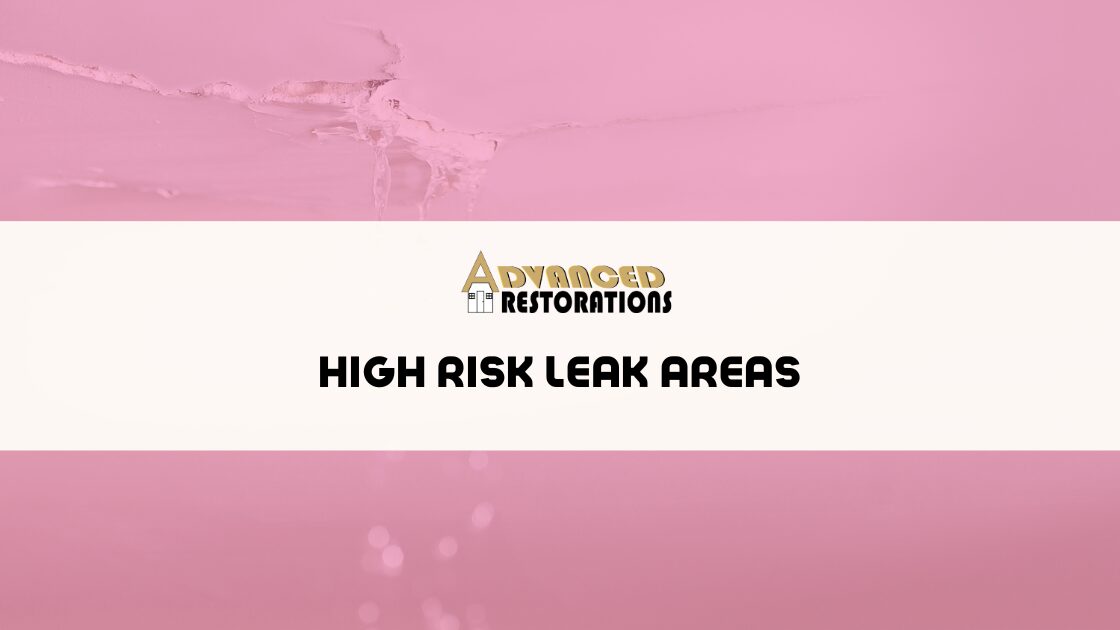
High Risk Leak Areas
Whether you are purchasing a new home, planning to renovate your current home, or attempting to diagnose water stains that are appearing inside your home – there are several areas on the roofing system that have the potential to be problem areas. A surefire way to diagnose possible problems is to have a professional review your property and below are some of the areas on the roofing system where they will spend extra time reviewing.
Dead Valleys
Easily the most “metal” sounding area you may have on your roofing system; dead valleys are also susceptible to several problems. A dead valley can occur when two or more roof slopes meet or when a roof slope meets a sidewall, and that meeting creates an area that cannot easily shed water (or flattens to provide an area where water can stand). Below are some examples of dead valleys we’ve encountered in projects:


These areas tend to pool water and if left unaddressed, they are the likely culprit for leaks in the future. Solutions can vary, depending upon location and are sometimes as simple as adding kick-out flashing (bent aluminum that will direct water flow away from the questionable area and towards the edge of the roofing system), application of ice and water shield as well as modified bitumen flat-roofing material, or in some extreme scenarios – additional framing that will create angles that helps water to flow from the area.
Sidewalls
Sidewalls are an area of a roofing system where two different slopes partially meet and there is an exposed wall area (typically covered in the same exterior material on the rest of the home; vinyl siding, stucco, etc.). As we previously discussed, this is an area where you may run into a dead valley as well.

When a homeowner has issues with water leakage around a sidewall, it is almost always caused from insufficient or incorrect flashing. For a property like the example photo, step-flashing should be installed along the entirety of the sidewall along the roof line – this should be installed below the vinyl siding.

If your home lacks the proper step-flashing, installing it can be a lengthy and potentially expensive process. To be properly flashed, your contractor will need to remove the existing vinyl siding which results in higher labor costs – if the vinyl siding is aged it will potentially be brittle and this can lead to breakages during that process, resulting in further costs.
Lacking this step flashing, water draining from the roofing system will work its way into the small openings and will eventually lead to serious damage to the roof sheathing, wall sheathing, and eventually the interior of your home.
If the flashing has been correctly installed but you’re still seeing issues with water damage, a kick-out diverter may be needed near the eave of the roofing system. The water draining from the roof will flow along the wall and as it reaches the end, there may be enough pressure to drive the moisture past the flashing. A kick-out diverter will force that final water flow away from the wall and off the roof eave or, hopefully, into your seamless gutter system that you’ve had installed.
Chimneys
Potential leaks around a chimney area are the number one service call Advanced Restorations receives in the Springtime – they have the potential to be an issue with the roofing system, but they also have the potential to be directly tied to the chimney structure itself.
All chimneys should have some form of step-flashing installed around them and depending on the material covering the chimney, many often require counterflashing as well. Below is an example of an exposed chimney – this type should have both forms of flashing installed:

As we can see in the example photo, this chimney was likely causing issues for this homeowner. It can be difficult to make out but, there is some counterflashing currently installed but it was not installed around the entirety of the chimney. It is safe to assume there is not much, if any, step-flashing installed below the shingle line as well – as we can see from the liberal applications of sealant, the chimney was likely still causing leak issues. During roof replacement, the correct process for this scenario would be to replace the entirety of any step-flashing present and install actual counterflashing around the perimeter.
Below, is an example of a chimney with stucco-style covering – while this chimney was counter-flashed, we can assume by the excess sealant applied that it was still having issues:

This chimney is installed along the eave of the roofing system and is over 24 inches in width. International Residential code dictates, in this scenario, a cricket (sometimes referred to as a side-saddle) should be installed to aid water flow around the chimney. Please see image below for an in-process photo of the cricket installation:

The other main issue that a homeowner can run into on a chimney is when the masonry around the chimney has deteriorated to the point of falling apart.

As you can see in this photo, numerous cracks are developing in nearly all areas of the masonry. Despite any efforts in properly re-flashing this chimney, leaks will begin to develop eventually without the attention of a skilled stone mason. Ideally, in a scenario like the above homeowner was dealing with, the chimney would no longer be in service – that would allow a roofing contractor to demolish the existing chimney to below the roof line, sheath over the opening, and continue with the roofing system replacement. These scenarios are not the be-all, end-all of high-risk areas for your roofing system to develop leaks. Unfortunately, there are many facets of a roofing system, when installed incorrectly, can lead to a homeowner developing leaks. That is why it is paramount to contact a professional with a great reputation to complete any repairs you may need. If you’re concerned about your high-risk areas, call our office today at (417) 229-0667 and schedule an inspection with one of our knowledgeable Field Supervisors!
